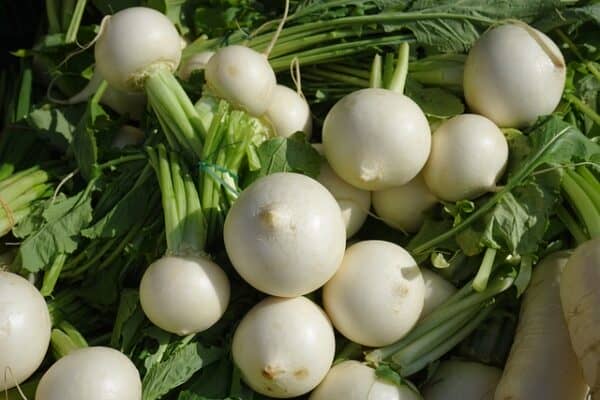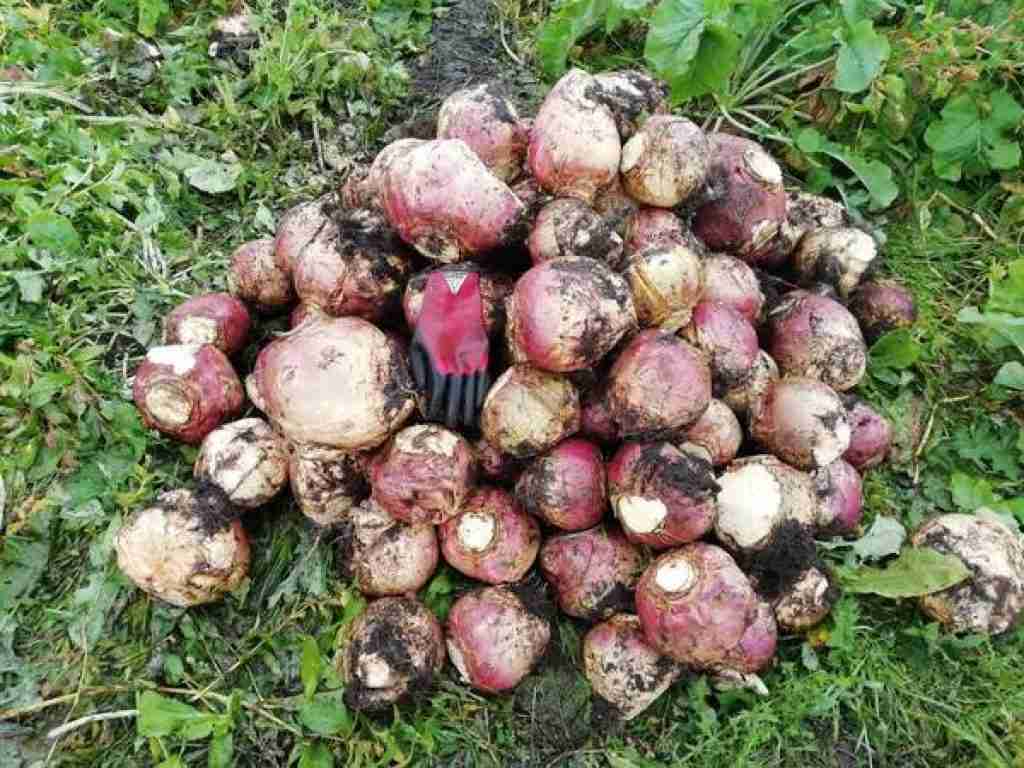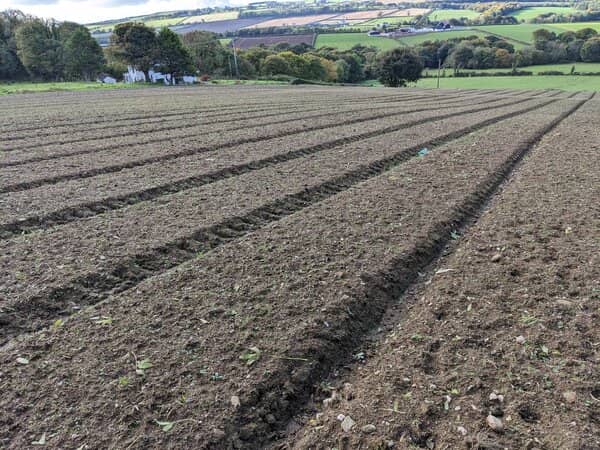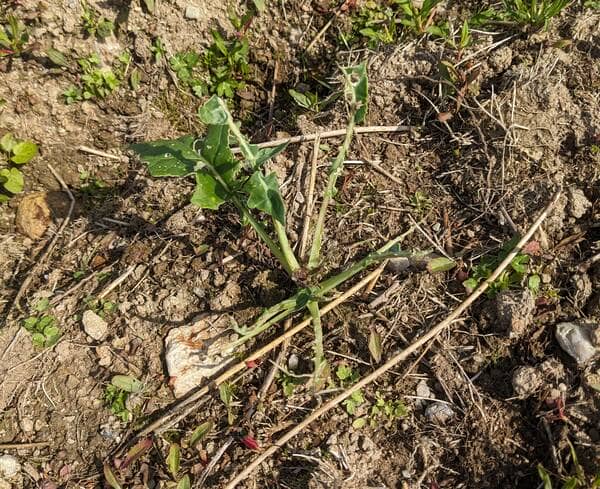There is a lot of confusion in mainstream circles over the difference between swedes and turnips. Swedes and turnips are just different species in the brassica family. So naturally, they have similar growth patterns and shapes that make these two root crops easily confused. So let’s find out, what are the differences between turnips and swedes!
The most relevant differences to growers between swedes and turnips are their size, color, taste, and preferred growing conditions. Although they can be interchanged in recipes, swedes are decidedly sweeter, larger, and more yellow in color. While turnips are smaller and whiter.
Keep reading to learn the differences between Swedes and turnips and why you’ll want to grow them in your garden.
Background of Swedes
Swedes are a biennial brassica that originated in northern Europe. The etymological root of swedes comes from a hybrid mix of cabbage and turnip. Many believe it originated in Sweden, hence the name, but it was most likely introduced to Sweden from further north in Norway or Russia.
Swedes also go by the name rutabaga, neep, swedish turnip, or even just turnip. Although the term turnip is technically not appropriate for swedes (aka rutabagas), it’s not a surprise that they get confused. Both swedes and turnips are in the brassica family.
Traditionally, swedes are used to make a mash that is comparable to sweet mashed potatoes. This dish is common in northern Europe and England. It’s also made into casseroles, fries, pickles, and soups. You can use them in any recipe that asks for root vegetables like potatoes and carrots.
Swedes are easy to grow and are a reliable crop, so the leafy tops of swedes were used traditionally to feed livestock. This undervalued crop in modern gardens is an easy and nutritious vegetable with a deep background in northern Europe.
Background of Turnips
Turnips are thought to have originated in Asia but were most likely domesticated in Europe. In the United States, turnips are much more common in gardens and kitchens than swedes.
You’ve probably come across turnips on your plate at some point, but in case you haven’t, they’re a versatile root crop. Turnips can be eaten raw in salads (preferably when they are young) or cooked with other root vegetables. Young leaves can also be stir-fried, steamed, or boiled.
Turnips enjoy cool weather and get woody if temperatures are too hot. They’re also not very frost tolerant and will die in the cold. For this reason, they’ve mostly been cultivated in temperate regions of the world.

Their small size and fast growth make turnips an awesome vegetable to plant between seasons or between rows. Pull young ones out of the ground as needed to enjoy fresh and leave more space for the others to grow.
These root vegetables are often used in livestock cultivation for cattle grazing. Fields can be sown with turnips and as they grow the cows can forage.
What are the differences between Swedes and Turnips?
Swedes and turnips are different species in the brassica family. Swedes’ botanical name is Brassica oleracea and turnips’ is Brassica rapa. Even though they are similar, there are definitely differences between swedes and turnips.
The most visible difference between the two root crops is in their color and size. Swedes are larger, have purple or yellow skin, and are yellow on the inside. They also have a tougher texture. Turnips on the other hand are small, have white flesh, and have smooth white, pink, or purple skin.

In the supermarket, turnips are usually sold with the edible greens still attached while swedes will have the leaves cut off. Plus swedes will often have a waxy coating around them to prevent the tubers from drying out.
Differences when growing swedes and turnips
Growing swedes and turnips also have similarities and differences. Since they are both brassicas they have a lot of the same pests and diseases. Therefore you shouldn’t plant them in the same place every year.
Follow standard crop rotation patterns as you would for other brassicas. To understand more about how this would work in a garden, you can check out the crop rotation plan by Cornell’s Cooperative Extension program at the end of the article.
The big differences when growing swedes and turnips has to do with fertilizing needs, date to maturity, and cold hardiness. Swedes are hardier plants than turnips, which do well in low temperatures and poor soils, but they take longer to grow. You can read more about their growing differences below.
Differences between swedes and turnips in the Kitchen
In the kitchen, swedes and turnips can be exchanged but it should be noted that swedes are sweeter – especially after a frost. Turnips are also slightly sweet when young but quickly become more peppery as they mature.
Swedes and turnips are often confused and interchanged, but they are different vegetables. Growing both species in your garden is well worth it since they complement each other in the garden and in your kitchen.
Are there many different varieties of each?
Like with other vegetables, there are different varieties of both swedes and turnips. Standard varieties of each can be found at any garden center. Or you can find fabulous heirloom varieties at specialty seeds stores.
You can get turnips that are red, white, or purple on the outside, fat and round or long and skinny. Some turnips are bred to have more frost resistance while others have shorter dates to maturity. The tokinashi turnip is the traditional turnip used in Japan and hinona kabu is a long and skinny turnip you can grow between rows of other vegetables.
The two most common varieties of swedes to grow are the American Purple Top and the Joan rutabaga. Both varieties have purple skin on the tops but the American Purple Top takes just 90 days to reach maturity, the Joan variety needs 120 days to harvest.
Both turnips and Swedes have many varieties of seed to choose from. Some are more resistant to temperatures while others grow more quickly. Mix and match qualities to diversify and extend your harvests.
Are they difficult to grow?
Both swedes and turnips are not difficult to grow and are suited for beginner gardeners. Swedes can be completely hands-off crops requiring no fertilizer, little water, and withstand freezing temperatures. However, you’ll need to give them longer to grow – between 90 and 120 days.
Turnips on the other hand are one of the super fast and easy-catch crops you can grow between seasons.
One of the most important things to keep in mind when growing turnips and Swedes is that turnips don’t do well in the cold. Freezing temperatures can kill the plants and the edible tubers become woody and hard to eat.
Swedes, on the other hand, love the cold. They actually get much sweeter after being exposed to frost so you won’t want to harvest early. One of the best things about their cold hardiness is that you can overwinter them in the ground. Save storage space in your kitchen and only harvest Swedes when you’re ready to use them.
Summary
Swedes are much hardier vegetables than turnips. They are also bigger, sweeter, and yellow inside instead of white. Swedes are often used in Northern European cuisine while turnips are more common in the United States. Grow both of these easy, nutritious, and delicious root crops in your garden to enjoy both.
Further reading:



